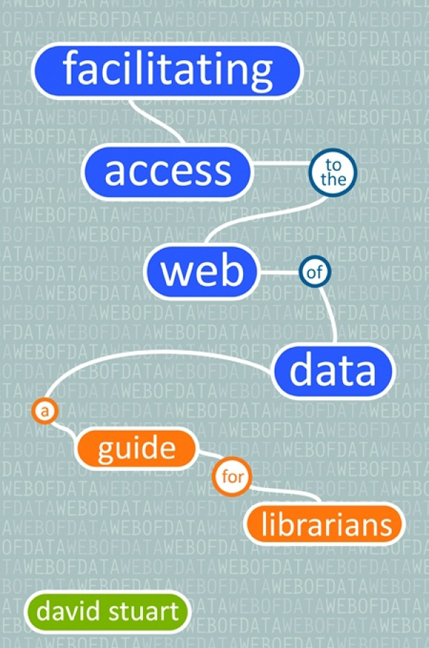Book contents
- Frontmatter
- Contents
- List of figures and tables
- Introduction
- 1 Open data
- 2 A semantic web: one that's meaningful to computers
- 3 Data silos
- 4 The semantic web: the RDF vision
- 5 Embedded semantics
- 6 The library and the web of data
- 7 The future of the librarian and the web of data
- Bibliography
- Index
- M-Libraries 2
- Making the Most of RFID in Libraries
- Access, Delivery, Performance
- Library Mashups
- Miscellaneous Endmatter
4 - The semantic web: the RDF vision
Published online by Cambridge University Press: 08 June 2018
- Frontmatter
- Contents
- List of figures and tables
- Introduction
- 1 Open data
- 2 A semantic web: one that's meaningful to computers
- 3 Data silos
- 4 The semantic web: the RDF vision
- 5 Embedded semantics
- 6 The library and the web of data
- 7 The future of the librarian and the web of data
- Bibliography
- Index
- M-Libraries 2
- Making the Most of RFID in Libraries
- Access, Delivery, Performance
- Library Mashups
- Miscellaneous Endmatter
Summary
Introduction
In comparison to the data in data silos discussed in the previous chapter, the semantic web is often seen as less concrete and more difficult to comprehend. It does not fit neatly in a little box, but spreads out across the web like some untameable beast. Even the language that is used to describe it is alien and unwieldy, and is filled with acronyms meaningless to most library and information professionals: RDF, RDFs, OWL and RIF. As such, most library and information professionals seem happy to leave the semantic web to the computer scientists. However there is an increasing amount of data being published in RDF, and if all this data is going to be used to its full potential, and reach the people who need it, then library and information professionals cannot leave the semantic web to the computer scientists, but must start engaging with it. They must help people both access the data that is available as part of the semantic web and put their data online in the most suitable fashion.
This chapter provides an introduction to RDF, the World Wide Web Consortium's vision for a semantic web, for the library and information professional. It introduces the concepts and the terminology so that they can understand the advantages of having data made available as RDF, the work that has already been done and the steps that still need to be taken. The semantic web requires a number of standards to become formalized before the original vision of a semantic web can be realized. The chapter starts by looking at what is meant by RDF and the associated term Linked Data, the necessary steps that need to taken to reach a semantic web as depicted in the ‘semantic web stack’, before going on to look at the stages that have already come to pass, and which the library and information professional can engage with, in more detail.
- Type
- Chapter
- Information
- Facilitating Access to the Web of DataA guide for librarians, pp. 77 - 100Publisher: FacetPrint publication year: 2011



